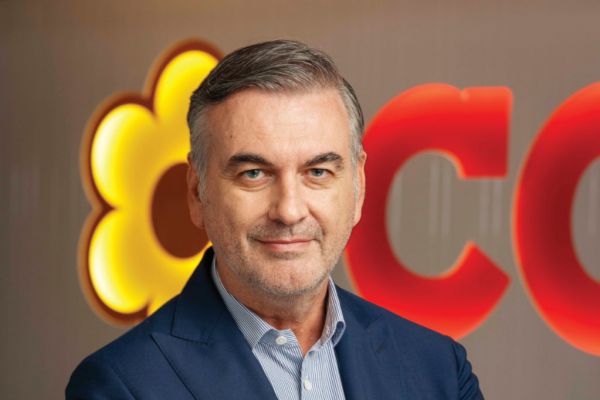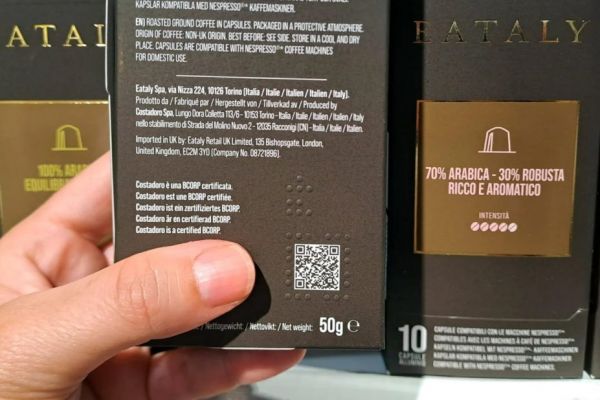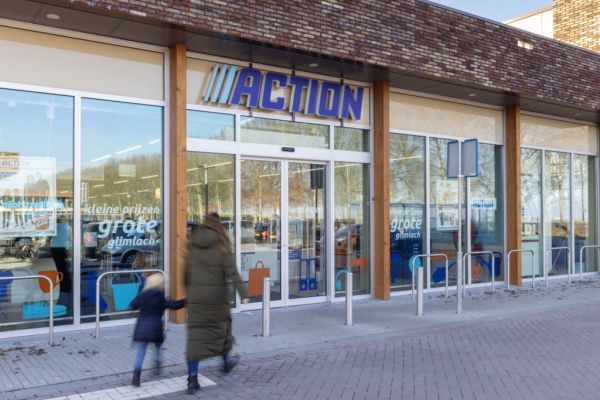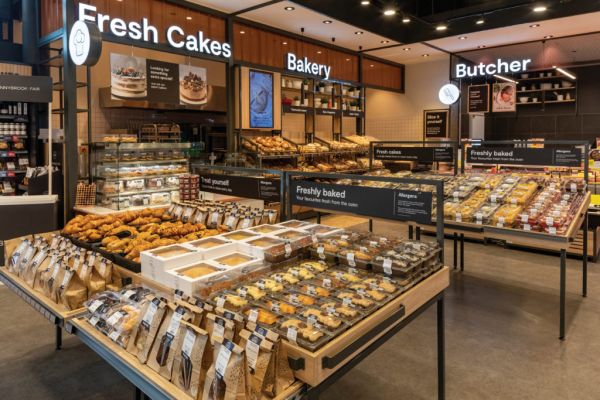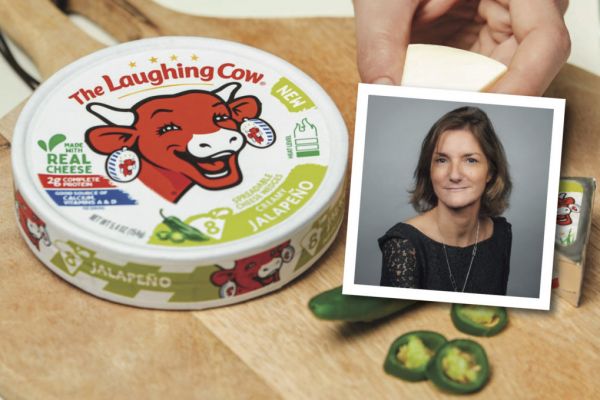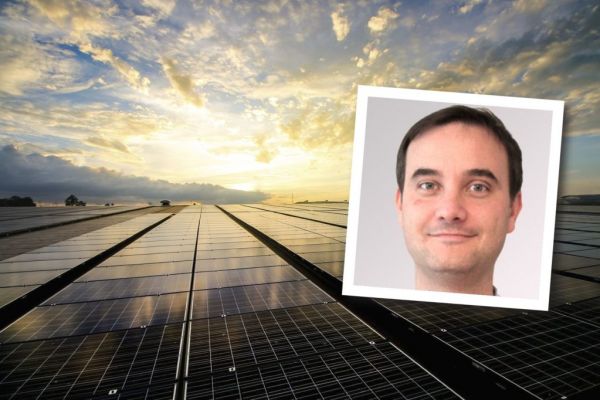There's a new name at the head of Italian retailer Conad – Francesco Avanzini, who alongside president Mauro Lusetti, is seeking to forge a successful future for the group. Stephen Wynne-Jones met him. This article first appeared in ESM's March/April 2024 edition.
In July of last year, Italian retailer Conad announced a riassetto organizzativo, or ‘organisational rearrangement’, establishing what it described as a ‘simplified’ governance structure – led by director general Francesco Avanzini and president Mauro Lusetti – that is more streamlined, gives an additional impetus to ongoing projects, and is more tailored to developing strategies for future growth.
The announcement followed the departure of long-standing Conad CEO Francesco Pugliese, who, in his nine years at the helm – and 19 years with the company in total – helped to oversee phenomenal growth for the business, which, following the 2019 acquisition of Auchan Retail’s Italian assets, is now the market leader in the country.
In fact, it was arguably the Auchan acquisition that sowed the seeds for Pugliese’s departure. The complex integration of that business – renamed Margherita Distribuzione – coupled with a tax dispute, led to internal friction in the five cooperatives that comprise Conad – Conad Nord Ovest, Conad Centro Nord, CIA – Commercianti Indipendenti Associati, Conad Adriatico and PAC2000A – and, ultimately, to the board’s decision to let Pugliese’s mandate expire last summer.
The end of an era, then? As Avanzini tells this magazine, the Bologna-based group is keen to reiterate that, despite the departure of its bespectacled figurehead, it’s business as usual.
“There has been no change to our strategy because we are still in the middle of the strategic plan that was launched by Francesco himself in 2022, to mark the 60th anniversary of Conad,” he says.
Avanzini worked alongside Pugliese for “more than half” of his career, first at Barilla, and then at Conad, taking on the role of chief operating officer in 2017. His role hasn’t changed all that much under the new structure – he’s still heavily involved in private-label, marketing and purchasing development – while Lusetti, the company’s new president, is responsible for managing the cooperatives, shareholder engagement, and the overall company ‘vision’.
Investment Plan
In full-year 2023, Conad’s sales broke the €20 billion mark, with the retailer seeing turnover go up by 9.1%, to €20.2 billion, despite what the group described as an ‘annus horribilis’ for consumers, as volumes contracted and inflation rose to more than double digits.
“At the moment, many consumers are in a wait-and-see situation, due to ongoing waves of inflation,” says Avanzini. “There are also challenges with regard to per-capita income because wages are not increasing at the same rate as prices.”
This hasn’t stopped the retailer from doubling down on its three-year investment plan, however, with some €2 billion set to be invested between 2023 and 2025 and focusing on two core priorities – ‘Consolidating the present’ and ‘Laying the foundations for the future’ – and five strategic pillars: efficiency, channel development, digitalisation, skills development, and sustainability.
For the coming year, Conad expects turnover to grow by around 5%, driven by 3% to 4% price increases, and 1% to 2% volume growth.
Conad’s store network currently encompasses 3,951 outlets – all of which are owned by individual entrepreneurs – including a growing number of specialty stores: 185 parapharmacies, 23 opticians, 47 fuel retail outlets and 140 pet stores. The group also recently unveiled a new proximity concept, TuDay Conad – more on that later.
According to Avanzini, a core element of the group’s investment strategy is focused on evolving its omnichannel capabilities, bringing the physical and digital experiences together to develop a more solutions-based approach, rather than just being a traditional retailer.
“We are trying to better understand our customers in this omnichannel environment – not just what they are purchasing, but also with regard to their way of life, their different interests, and how we can build a new platform that meets their specific needs,” he says. “Customers should be able to see, in Conad, both a food retailer and a problem-solver regarding healthy living, entertainment, and so on. We think that, in specific fields, we can offer them tailored solutions, all within our omnichannel strategy.”
HeyConad
This approach is best evidenced by the recent launch of the HeyConad digital app and ecosystem, which the retailer is confident will enable it to develop a more personalised dialogue with its shoppers.
As well as offering standard solutions, such as promotional discounts and online ordering, Conad is eager to augment the HeyConad app with a variety of products and services. In October, it signed a partnership with Welcome Travel Group to launch HeyConad Viaggi, which offers shoppers the opportunity to purchase ‘tailor-made travel experiences’ in historical Italian regions. Further additions to the app are planned for the coming months, around health – screening services, body care, and wellness – pet care, and insurance services.
HeyConad will also help to bridge the gap between the various cooperatives that comprise the business. As some industry commentators have noted, Conad’s five-pronged structure has limited its attempts to think beyond traditional, transactional retail.
“We have five different cooperatives, but we have a unique customer identity,” says Avanzini, “so we are working on ways to ensure we have circularity of information between our cooperatives and our markets.”
E-commerce in Italy is a low-margin game, barring major cities such as Milan – “It’s a must-have, but it’s not profitable,” says Avanzini – and, as such, by augmenting its digital presence with relative services, monetisation opportunities abound.
“We have a large number of loyalty members, and as well as buying groceries, they often have other, local needs – financial activities, payment solutions, or health appointments,” he says. “We’re hoping that, in the future, they can download our app, HeyConad, and find all of these solutions in a single gate.”
Where possible, these additional services will be linked to Conad’s traditional food retail proposition. Avanzini forsees a time when a customer might book a trip to, say, Tuscany, through the HeyConad app and enjoy the best that the region has to offer, and then, upon returning, is presented with special offers relating to the food and drink products sampled on the journey.
“That’s a different kind of tourism, built around food experiences,” he says. “That’s why we think this could offer so much more than our traditional, physical store model – it’s more of a solutions-based approach.”
In the medium to long term, Avanzini is hopeful that HeyConad could drive as much as 20% of sales and 30% of margins at the retailer, but, in the short term, the focus will be on “convincing shoppers that we can be a solutions provider for some aspect of their busy lives – whether that’s food, travel, holidays, insurance, and so on. We don’t see ourselves as a full-solution retailer – that’s not in our nature – but we see that there is a territory around local experiences, local foods, etc. in which we can be a leader, and other territories in which we can’t.”
Market Conditions
Last year, in response to the inflationary situation facing many of its shoppers, Conad ramped up its Bassi e Fissi (‘Low and Fixed’) initiative, through which it seeks to offer essential items at low, fixed prices. Some 600 SKUs from 115 product categories were available as part of the initiative during 2023, offering average savings of 27.8% to consumers. In December 2023, the group committed to freezing the price of essential items for the first quarter of 2024, as cost-of-living concerns persisted.
Some commentators have suggested, however, that Conad is lacking the skills to take on an emboldened discounter market in Italy. Aldi entered the market in 2018 and, in December, opened its 173rd outlet, while Lidl, Eurospin and Penny Italia have all upped their games in recent years.
While Avanzini acknowledges the growing presence of the discounters in the Italian market, Conad’s operational structure means that it’s unlikely to take the likes of Aldi and Lidl head-on.
“As an entrepreneur-led model, we are obliged, as a company, to ensure that every single entrepreneur can make money,” he says. “That’s quite different from a centralised discounter model. We are focusing, especially in 2024, on prices and margins, but we need to be tactical, to ensure that our entrepreneurs are still able to compete, as well as maintain their profits.”
Private label has been at the forefront of maintaining the group’s competitiveness. Store brands now account for more than a third (33.5%) of sales, equating to around €6 billion.
Conad’s recently expanded premium Sapori&Idee range – which now encompasses more than 200 SKUs – is joined by Sapori&Dintorni (Italian products), PiacerSi (health and well-being), Essentiae (personal care), Alimentum (nutrition), Conad Baby (baby products) and Petfriends (pet products), as well as its standard Conad-branded line, while its Verso Natura range, which includes organic and sustainable products, was repositioned and expanded last year.
“We have no ‘first price’ range in our assortment – that role is taken by the mainstream Conad brand, which accounts for two thirds of our sales in private label,” says Avanzini. “With our other brands, we are trying to create a point of difference, in order to generate a better margin for our entrepreneurs.
“Our private-label strategy has been developed with our entrepreneurs in mind. We have to be able to maintain good margins while also offering a low price. We can be no more than 5% to 10% more expensive than Aldi or Lidl, for example, for products of the same quality.”
At the same time, Conad has expanded the experiential element of its private-label offering, with some 20 stand-alone Sapori&Dintorni stores located around Italy, including at Rome’s Termini station and on Via de’ Bardi, in the centre of Florence.
“We have to focus on quality, especially here in Italy,” says Avanzini, “because of the relationship and value that people associate with food products. Also, some products are viewed quite differently from region to region, for all sorts of historical reasons.
“It’s not easy at the moment, given the financial situation, but we have to find a way to generate additional value from what we sell. If you have basic needs, we can respond with commodity products. If you have different needs, we have the quality to cater for that. Otherwise, we might as well leave the market to the discounters.”
TuDay Conad
Avanzini believes that the structure of Conad’s store portfolio – around 25% of the estate is comprised of hypermarkets, 45% supermarkets, and the remainder small stores and specialty stores – has enabled the retailer to balance the changing nature of the marketplace. However, he highlights a consistent challenge facing many small-store operators – “mostly located downtown in the medium and large cities,” where a ‘generalist’ approach to retailing often prevails.
“When a Lidl or Aldi or some other competitors open nearby, and they’re more efficient on prices, our entrepreneur suffers,” he says. “That’s why we needed to develop a different solution.”
Enter TuDay Conad, the retailer’s newest store concept. Described as a ‘modern and dynamic concept with an offer suited to the new needs and lifestyles of consumers’, the first TuDay store was launched in Pistoia, in Tuscany, in October 2022, and the retailer anticipates room for around 200 such outlets in the medium term.
Avanzini sees TuDay as an opportunity to redefine the “format specifics” of Conad’s small stores. If an outlet is located in a busy district of Milan or Bologna, for example, or in a medium-sized rural town, the assortment will differ. Services on offer may include click-and-collect, laundry, delivery, and bill payment – more of a ‘neighbourhood hub’ than a traditional supermarket.
“It’s a Lego-type system,” he says. “Let’s say we have a red brick, which is ready-to-go products, and a yellow brick, which is gastronomy, and a blue brick, which is wine. We will arrange the different bricks depending on the needs of that store and that neighbourhood.
“For example, we recently launched a new TuDay store in my home town, Verona – around 50 metres from Juliet’s balcony – which is always crowded with tourists. What products do they need? A bottle of Coca-Cola, maybe a sandwich, a yoghurt, so that store is entirely frictionless – you enter with an app, select your products, and you leave. It’s all about efficiency, based on the location. That’s what TuDay is – it’s not a store, it’s a solution.”
Avanzini is confident that many stores will switch to the new TuDay concept, “otherwise they will close because they don’t have the right cost structure in place. They suffer from efficiency issues, low profitability, problems in terms of flexibility. That’s why improving productivity per square metre is crucial. Introducing solutions and higher-margin products or services can help boost margin per single unit.”
Future Challenges
In the immediate term, of course, Conad continues to deal with the legacy effects of a high-inflation, low-consumer-confidence environment, in which consumption is not likely to “increase in the short term, and only slightly increase in the long term,” says Avanzini, “but now is the time to invest because society is still changing very fast.”
He points to recent studies that indicate that Italy’s population is ageing, with fewer families having children – the knock-on effect of which is likely to be a reduction in population to around 54 million by 2050, from 59 million now.
“That’s why we have to consolidate and develop new targets for the business,” he says. “Plus, so much of what we do will be driven by digitalisation in the medium term. That’s why I’m confident in our strategy, going forward. What can we do to change our model, to connect with the core behaviours of our customers, other than just offering them quality food?”
This article first appeared in ESM's March/April 2024 edition.
